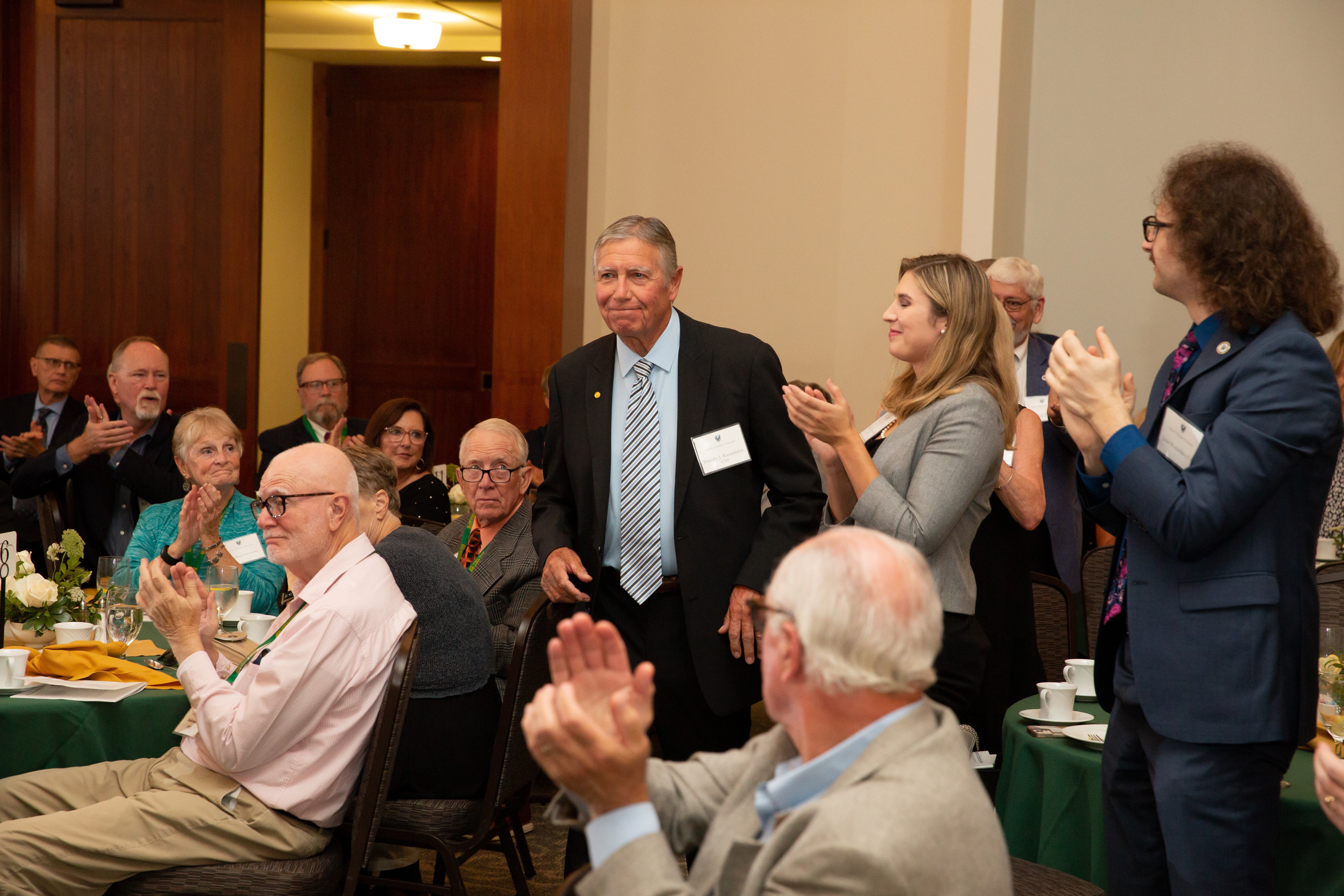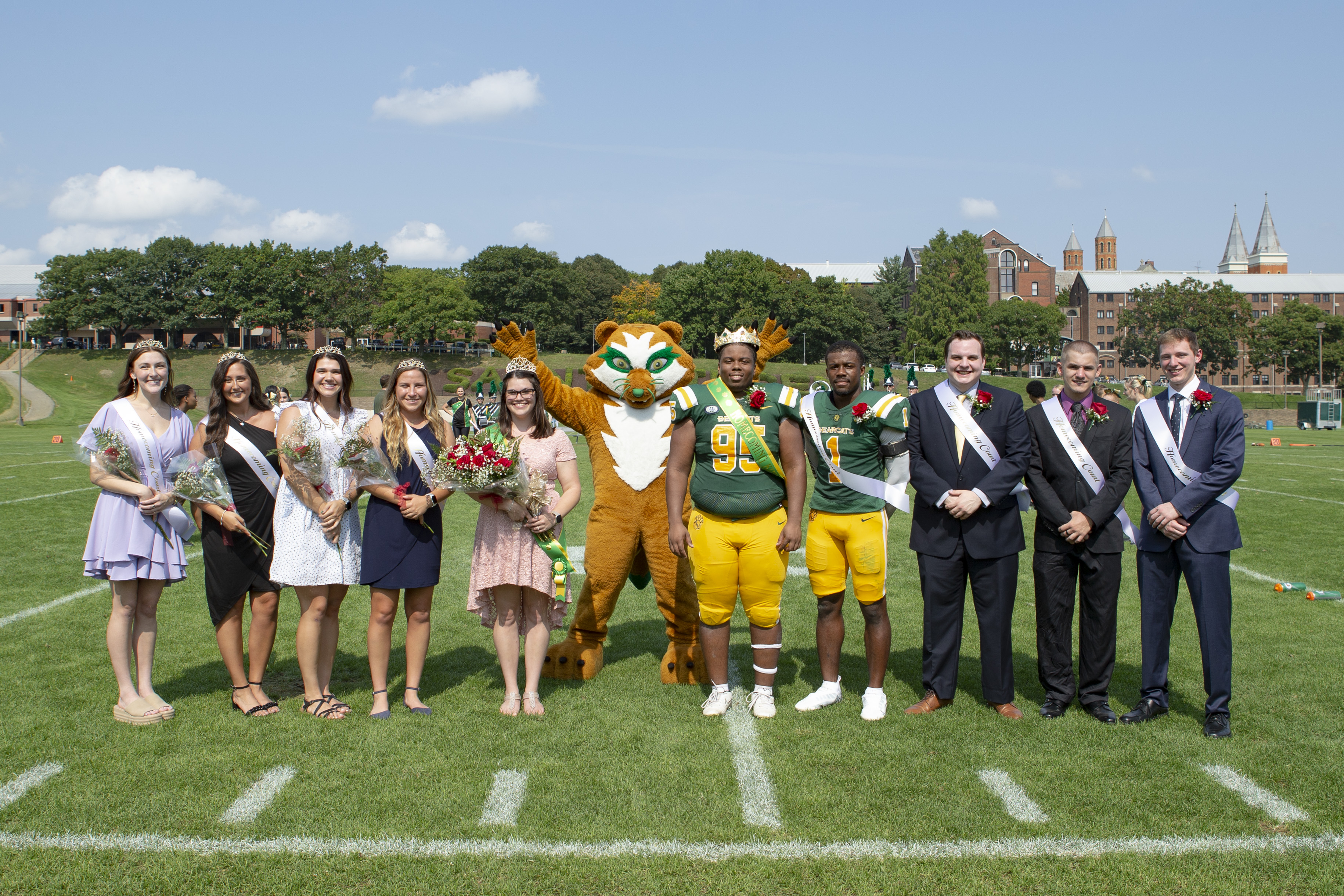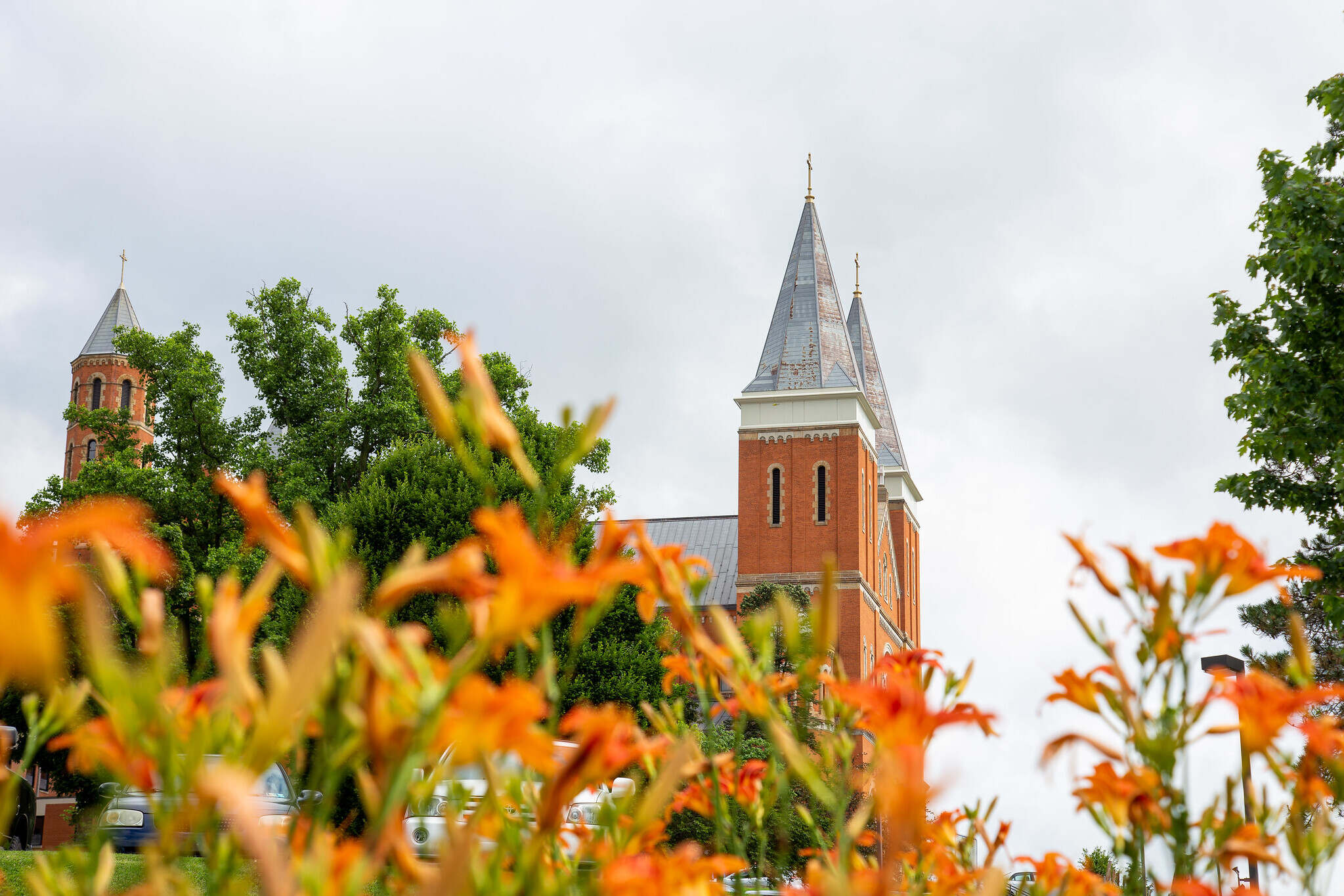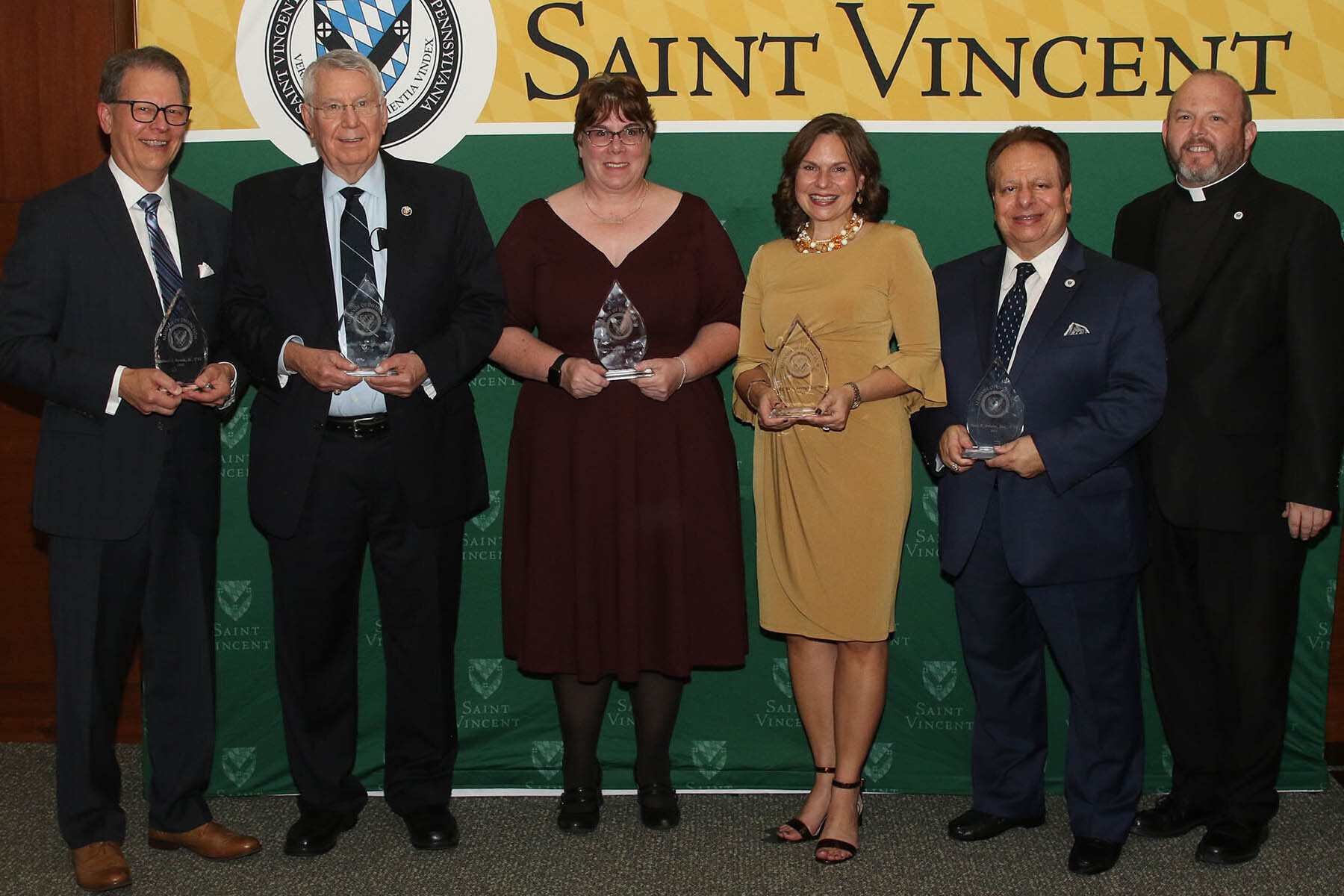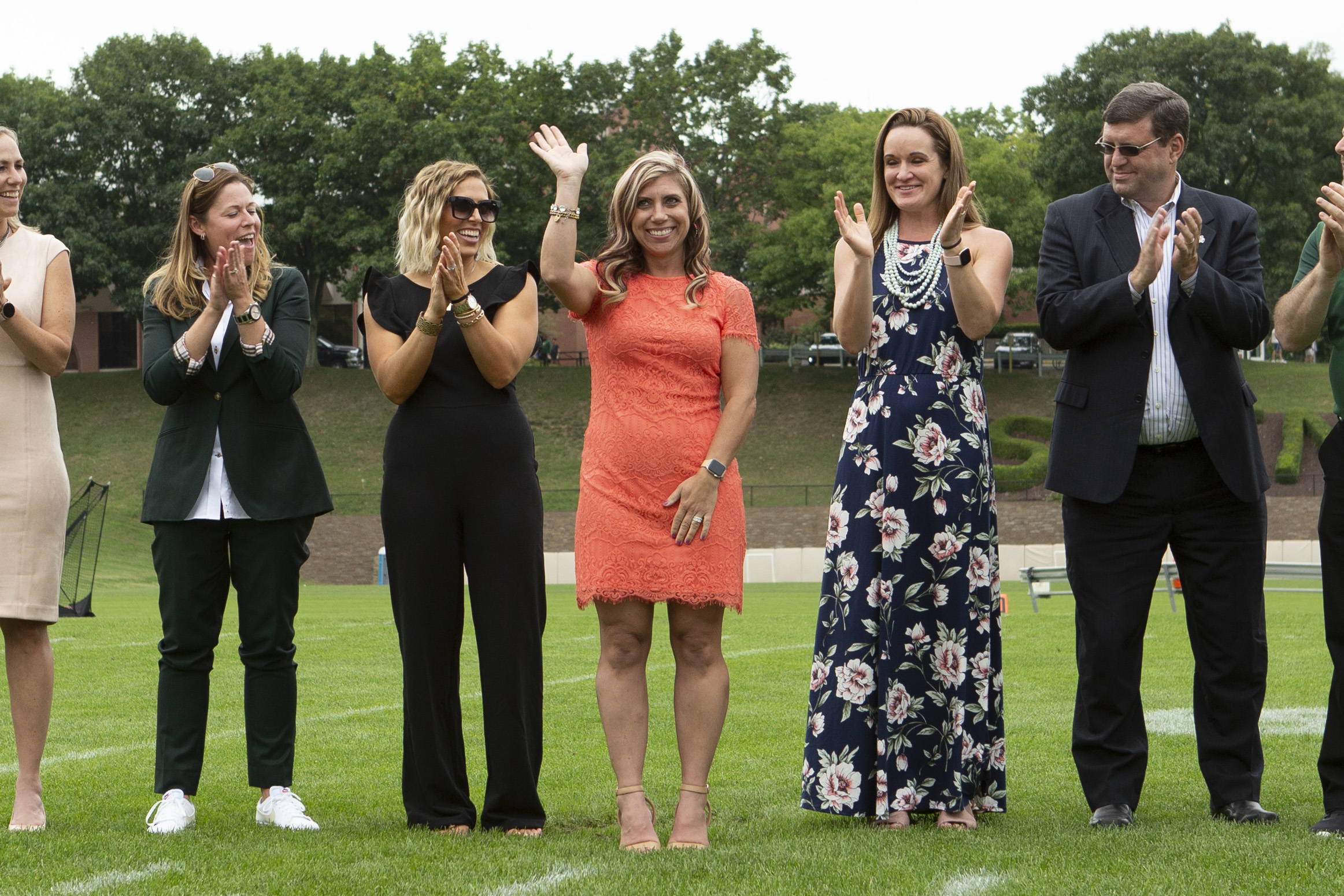Alumni and Friends
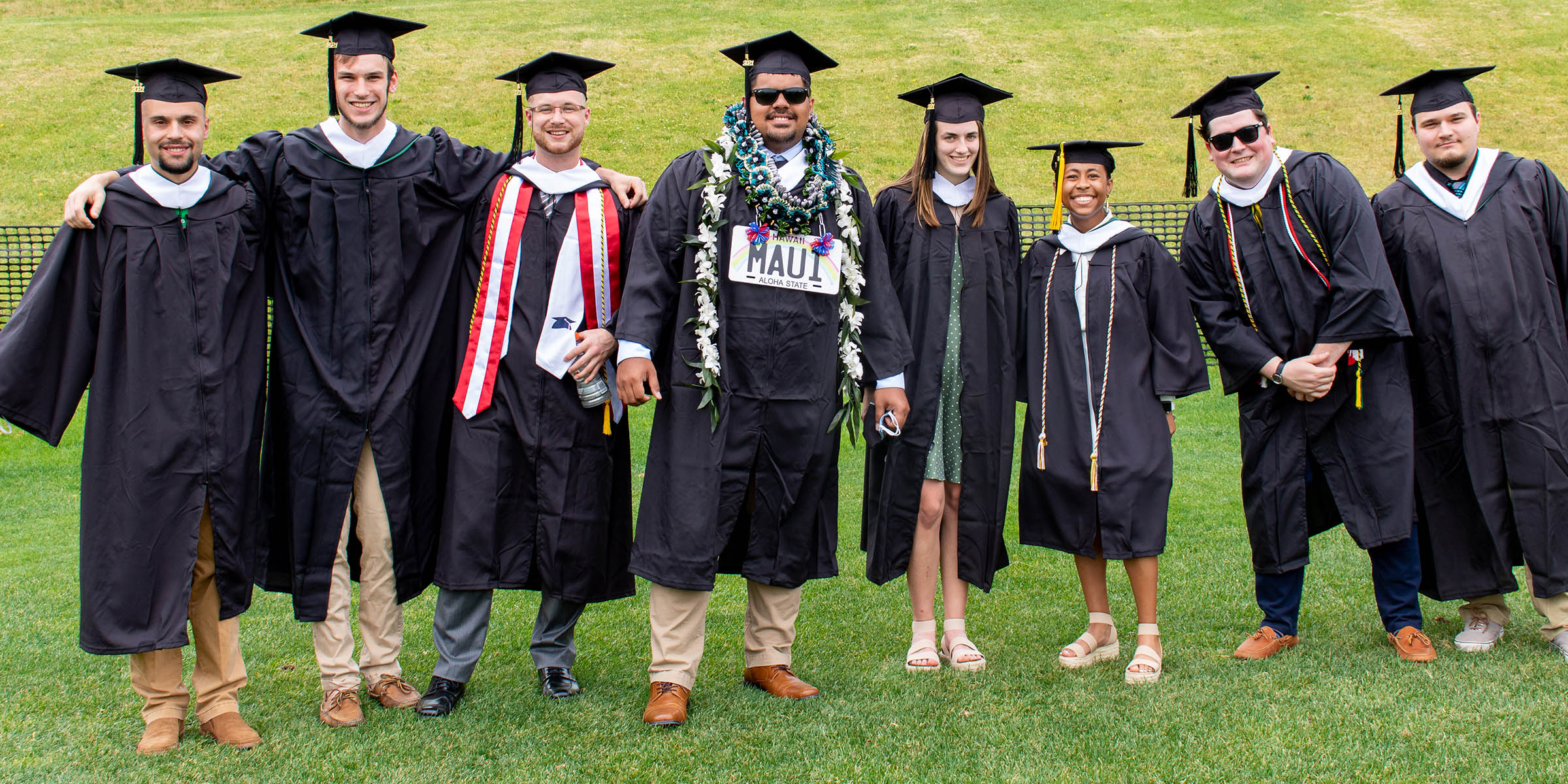
-
In This Section
- Alumni Events
- Alumni & Friends
- Supporting Saint Vincent
- Giving Opportunities
- Forward, Always Forward
- Recognizing Our Donors
- Alumni of Distinction
- Athletic Hall of Fame
- Alumni Services
- Alumni Council
- 1846: The Magazine of Saint Vincent College
- Journey Forward
- Prep School
- Homecoming and Fall Family Weekend
- Alumni Referral Program
- Recognition Events
Welcome Home
Saint Vincent is proud to serve our 14,000+ alumni in a variety of ways, from welcoming alumni back to campus, to meeting them at a variety of special events, to cultivating our future alumni — our students.
Whether you graduated more than 50 or 5 years ago, it's our hope that you stay connected to all the exciting things happening at Saint Vincent College. It is no surprise as to why Saint Vincent continues to move forward in a positive direction, it is a result of you — our Alumni.
Scroll down to view resources and engagement opportunities.
Please update your information/submit class notes with the form below
Alumni & Friends
- Alumni Events
- Supporting Saint Vincent
- Giving Opportunities
- Forward, Always Forward
- Recognizing Our Donors
- Alumni of Distinction
- Athletic Hall of Fame
- Alumni Services
- Alumni Council
- 1846: The Magazine of Saint Vincent College
- Journey Forward
- Prep School
- Homecoming and Fall Family Weekend
- Alumni Referral Program
- Recognition Events
Alumni Office
Phone:
724-805-2457
Email:
alumni@stvincent.edu
Office of Philanthropy and Alumni Relations
Phone:
724-805-2949
Email:
annualfund@stvincent.edu
Stay Connected
-
Our Services
From alumni who recently graduated to those who have celebrated their “golden anniversary”, your alumni office staff are here to help keep you informed and involved in ways that are meaningful to you!
Connect with other alums. We sponsor gatherings in various areas throughout the year. Let us know if you’d like to host or help us organize an alumni event, serve on the Alumni Council, to help our students get meaningful internships. To become one of our ambassadors for your location, email alumni@stvincent.edu.
It’s YOUR Homecoming! If you would like to be a class agent, help organize your class reunion, or get involved in the activities each fall, we’d love to hear from you!
Know someone who deserves recognition? Contact us to nominate a deserving alum for an Alumni of Distinction Award, the Prep Hall of Fame, or the Athletic Hall of Fame.
Do you live outside of the Southwestern Pennsylvania region? Help us recruit students from your area. Get involved with admission activities for prospective students and their parents.
Is something new and exciting happening in your life? Send us your news to be published in The Saint Vincent Magazine's Alumni News Section.
Assist fellow Bearcats! The Career and Professional Development Center (CPDC) is looking for internships and full-time jobs at any company (in-person or remote) within the United States for our students and upcoming graduates! If you are willing to take on a Bearcat this summer, please contact the CPDC at 724-805-2070 or careers@stvincent.edu.
These are just a few ways we serve our alumni. If we can help you in these or in any other way, please let us know.
-
Thoburn Award
Alumni that graduated five to seven years ago are invited to nominate professors for the Thoburn Excellence in Teaching Award. We are especially interested in recognizing those faculty members who were important in the development of your professional or personal life. Alumni have a particularly good vantage point to identify those exemplary professors.
Two generous benefactors, the late Tom and Tina Thoburn, established an endowment to annually recognize a Saint Vincent College faculty member with an award for teaching excellence. Based on the nominations we receive from alumni like you, a committee comprised of students, faculty and staff will select the recipient for the Thoburn Excellence in Teaching Award. The award is presented during Founders' Day Convocation in November.
-
Alumni Spotlights
Thomas F. Cocchi
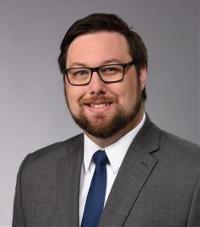 Alumnus
Alumnus
Class of 2013Tom Cocchi is a 2013 graduate of Saint Vincent, with degrees in Finance and Politics. Following his SVC experience, he attended law school at Duquesne University, and currently practices as an attorney with Zimmer Kunz, PLLC in downtown Pittsburgh. Tom is involved with the Monroeville council of the Knights of Columbus which has been working to help disadvantaged families in the Monroeville area survive through the Coronavirus crisis all while meeting virtually over Zoom.
While at SVC he was involved in the Company and SGA, and served as Executive Board President in 2012. He was also involved with the Ultimate Frisbee club, and was a Prefect in Benny and Rooney. During his Junior Year, Tom participated in an "externship" with Judge William Baughman of the Northern District of Ohio, a fellow Saint Vincent Alum, and is consistently asked about that experience by curious interviewers to this day.
Tom lives in the Monroeville area with his wife Colleen (Fisher) Cocchi, C'13 and a Chemistry/Education major, and their two "Bearkittens" Alexis and Madison. Colleen works part-time in the demonstration theater of the Carnegie Science Center. Tom and Colleen collaborated on a joint program between the Science Center and the Allegheny County Bar Association's Young Lawyers Division in February of 2020 which recently received national recognition from the American Bar Association for outstanding service to the public. Tom and Colleen are expecting Bearkitten #3 this November!Abigail J. Geisel
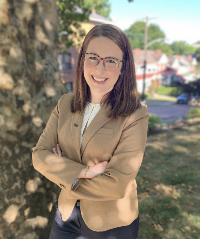 Alumnus
Alumnus
Class of 2014
Abigail Geisel is a 2014 graduate of Saint Vincent College where she majored in Communications and minored in Marketing. Her activities on campus involved the Orientation Committee because it was such a great way to meet incoming Bearcats and their families and also to welcome them into our community. She stated that August and September were always incredibly rewarding times of year. In addition, she was on the Executive Team for Women in Business. Some of her fondest college memories include traveling to New York City to attend the Columbia Women in Business Conference each February. She misses the tight knit community of faculty, staff and students at Saint Vincent. She also misses being greeted by Veronica and her warm smile in the cafeteria, APB activity nights, and Pod Wars. She recalls Saint Vincent as being a unique community that is unmatched by anything she has ever seen.
When asked how Saint Vincent has impacted her career and life, Geisel replied, "Saint Vincent prepared me for much more than a career. With an emphasis on soft skills and a liberal arts approach, I have felt more than adequately prepared for many challenges I've faced in both my professional and personal lives. In a world that feels very divided currently, Saint Vincent taught me how much value there is in unity and that it is achievable. It is possible to have a rational dialogue with someone who has views that are different from your own and do it in a respectable and productive way. My experience at Saint Vincent still gives me hope for the future."
Abby is approaching her five-year anniversary in E-Commerce Marketing at FedEx. She says every day is an adventure and even more so in this Covid-19 e-commerce boom. Recently, she began her next educational journey as an MBA candidate at the University of Pittsburgh Katz School of Business. Beyond her full-time job responsibilities, she is also a part-time wedding planner with bumble burgh Events Co. She lives in Pittsburgh and loves every minute of discovering new restaurants, attending sporting events and hiking in the city's numerous parks (of course in a Covid-19 safe way). She is also still very close with several Bearcat alumni! She also joined the Saint Vincent Alumni Council last year and is looking forward to interacting with current and prospective Bearcats.
Alexandria C. Simmons
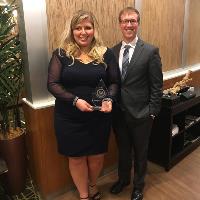 Alumnus
Alumnus
Class of 2010
Alexandria Simmons is a 2010 graduate of Saint Vincent College where she majored in both Communications and Psychology. She was president of the Class of 2010 and involved in SGA, Orientation, PRSSA, Psychology Club, and Dance Team. While at Saint Vincent, she was an intern for the Pittsburgh Steelers and WTAE-TV.
When asked about what she misses most about Saint Vincent, she replied, “I miss so much about Saint Vincent - but most of all, I miss the welcoming community, thoughtful conversations with professors and staff, and being so close to my friends at a moment’s notice. I'm still active at Saint Vincent as Vice President of the Alumni Council and enjoy the time I get to spend on campus and with other alumni in that role. In addition, we plan vacations and gatherings with our favorite Bearcats, so we keep the Saint Vincent feeling around no matter where we are!”
SVC continues to impact her life in many ways. She grew confident at Saint Vincent, not only through her education, but also through her faith. She uses the skills she acquired at Saint Vincent daily in her work and the compassion and involvement that became a part of her character at Saint Vincent in every interaction that she has with others. Mrs. Simmons is a Business Development Manager at Clark Hill, a corporate law firm with 25 offices throughout the US, Ireland and Mexico. “I work with the firm's attorneys to develop and implement approaches to maximize business potential from current and new clients by closely working with practice groups and client teams, creating strategic pursuits and proposals, and assisting with client service programs and marketing.”
Alexandria is also married to another Class of 2010 Bearcat, Shane Simmons and they live in Jefferson Hills. Shane ran cross country while at SVC and works as an Environmental, Health and Safety professional. They are hoping to adopt their first child soon to add to their Bearcat family!
Fun Fact: Her brother, Geo Muzika, attended SVC, too. He graduated in 2014, majored in Communication, and was on the baseball team. They really have a great Bearcat family!
Mitchell G. Farrell
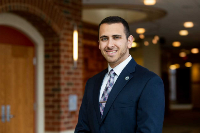 Alumnus
Alumnus
Class of 2018
Mitch Farrell is a 2018 graduate of Saint Vincent College with degrees in Accounting and Music. While attending SVC, Mitch was involved with the Student Government Association, Saint Vincent Players, Saint Vincent Singers, and Service Learning. Some of Mitch’s favorite memories from college are his three trips to Haiti, being in Beauty and the Beast, learning Italian, making lifelong friends, and meeting his fiancé, Sharon Nincke, C’18.
Mitch is a licensed CPA and works in the audit practice of Sisterson & Co, LLP. Mitch credits the McKenna School, especially Dr. DePasquale for his ability to obtain 150 credits in four years and pass the CPA exam one year after graduation. Mitch also thanks Professor Octave for encouraging him to add a music major and continue singing after college.
Having learned the importance of a strong community while at SVC, Mitch now serves on the Alumni Council for Saint Vincent, the Board of Directors at Saint Joseph High School in Natrona Heights, and is Treasurer of the Rich in Mercy Institute, which supports the poor and marginalized in Haiti and East Africa. In his free time, Mitch enjoys golfing and singing for Saint Benedict Church and the Westmoreland Choral Society. Mitch and Sharon plan to marry in the Saint Vincent Basilica next summer.
Joseph T. Maloy, Ph.D.
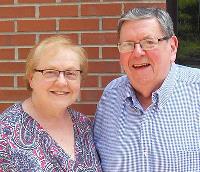 Alumnus
Alumnus
Class of 1961A little over a year ago Joseph T. Maloy, Ph.D., C -’61 retired after more than fifty years of teaching chemistry at Ramsay High School (4 years), West Virginia University (9 years), and Seton Hall University (38 years). Earlier this year Joe and his wife, Marlene, celebrated this event by making unrestricted gifts to Saint Vincent via Qualified Charitable Distributions (QCDs) sent directly from their IRAs. Hoping that others might want to consider this method of giving, we have asked Joe to share some of the thought processes that he and Marlene went through as they prepared to make these gifts on the brink of retirement.
I am happy to respond to this request. Now that QCDs have been made a permanent feature of the IRS code, more IRA owners over 70.5 years of age are likely to be using them to make direct charitable contributions of up to $100,000 while simultaneously reducing the amount of taxable income needed to satisfy the Required Minimum Distribution (RMD) obligation for that account. While the popularity of QCDs seems surely to be on the rise, setting one up requires adherence to the IRS code, and due diligence is mandated. Insofar as our QCDs are concerned, I can explain what we did and describe some of the pitfalls we tried to avoid in making our gifts. Readers should be aware, however, that any interpretations of IRS regulations presented herein are my own opinions and not to be construed as tax or legal advice in any way. Please consult with your own tax/legal advisor if you wish to consider charitable giving with QCDs.
You mentioned the age 70.5 years along with RMD. What is the significance of this age and the term RMD?
Up until the age of 70.5 years, roughly the age of a golden jubilarian, funds invested in traditional IRAs can continue to grow (or decline) within the tax sheltered environment without mandated withdrawal. Beginning at age 70.5, however, owners of traditional IRAs must begin to withdraw funds from the tax shelter and pay taxes on the annual withdrawals as ordinary income. The required withdrawal is called the RMD, and it is computed annually as an age-based percentage of the value of the IRA at the close of business on December 31 of the previous year. (At age 70.5, the percentage is about 4%; at age 99 it is about 15%.) Some time during the calendar year IRA owners must withdraw an amount equivalent to the RMD (or more) from the IRA and pay income taxes on it. Taxes on the RMD can be avoided by donating some or all of it (up to $100,000) to charity. This is where the QCD comes in; it allows one to satisfy RMD obligations without taking on additional taxable income.
You’ve been addressing traditional IRAs held by an individual. What about employer plans such as 401k and 403b plans? Do they have the same RMD requirements as traditional IRAs?
Employer sponsored retirement accounts such as 401k and 403b plans have RMD requirements like traditional IRAs, provided that the employee has stopped working or an employee continues to work (beyond age 70.5 and is a 5% or greater owner of the company. Generally speaking, however, a non-company-owner can put off taking RMDs from 401k and 403b plans by continuing to work beyond the age of 70.5, if permitted to do so. In this instance, RMDs commence at the age of retirement.
You’ve been addressing traditional IRAs and employer sponsored 401k and 403b plans. Do all these plans allow QCDs?
No! Even though 401k and 403b plans are generally subject to the same RMD requirements as traditional IRAs, only members of the traditional IRA family allow QCDs. While the onset of taking 401k or 403b RMDs can be delayed by continuing to work past the age of 70.5, the direct donation of qualified funds from either of these plans is not permitted. In order to make a qualified donation from funds accumulated in an employer’s plan, the plan must be converted to a traditional IRA after retirement. This conversion process is known as a rollover.
This all seems to be pretty wonky. How do these arcane minutiae affect the donation of a QCD?
Clearly, your retirement funds must be held within a traditional IRA if you want to make a charitable donation via a QCD; employer plans are not eligible for QCDs. Workers who find themselves with substantial funds held within an employer’s 401k or 403b plan at retirement must establish a traditional IRA and then rollover all or part of the employer’s plan into the IRA if they wish to make a QCD after reaching age 70.5. In general it best to arrange for a custodian to custodian transfer of funds held within the employer’s plan to the IRA, particularly when different custodians are involved. Account owners who are comfortable with the IRA target of the rollover might want to consider doing the transfer in one fell swoop. (Funds left within the employer’s plan will be subject to separate RMD requirements the following year.) In doing a rollover, timing is of the essence. If one wishes to make a QCD from an IRA next year, the funds must be transferred from the employer’s plan to the IRA before the close of business on December 31 of this year. Missing this deadline by a day could delay your ability to make a QCD for more than a year.
So how did this pertain to your specific situation?
As Marlene and I were approaching retirement we had four different retirement accounts. We both had traditional IRAs; she had a 401k plan with her employer; and I had a 403b plan with mine. As we each retired, we rolled our employer plans into our respective IRAs. She retired first before reaching the age of 70.5 years, but I delayed the RMD onset by working for many years past that age. When I finally did retire, I took care to complete my IRA rollover prior to December 31 so that these funds would be available in the IRA for QCD the following year. This increased our taxable income for the prior year by having both earned income and RMD income in the same year, but it avoided the possibility of having double RMD income in the latter year (with no ability to offset it with a QCD).
You stated above that you and Marlene each submitted checks drawn upon your separate IRAs in making your QCDs to Saint Vincent. What was your rationale for doing this?
There are two answers to this question, one business, the other personal. Even though we file a joint tax return, IRAs are classified by the IRS as individually-owned accounts, and each has its own separate RMD computation. QCDs drawn on each account can be used to offset the tax consequences of the RMD for that account but not the other. Whatever either of us can donate via QCD is an amount that she or he would not have to withdraw from the tax shelter in order to satisfy her or his RMD obligation. Now, from a personal perspective, the answer is much more straightforward. Marlene and I began the circle of our married life at Saint Vincent nearly fifty years ago, and it is our intention that it will end here where it begun. With this in mind we have each been making independent contributions to Saint Vincent for several years now. Her commitment to Saint Vincent is no less than mine; in fact, her annual contributions are usually greater than my own.
Thank you for giving annually to Saint Vincent. What has motivated you to this, and given this history, why do you now want to up the ante with a QCD?
I began contributing to Saint Vincent out of gratitude for the four year scholarship that was given to me by the college over sixty years ago. This full tuition scholarship was based on both need and ability - and in my case the need far exceeded the ability. I would not have been able to attend Saint Vincent or any college without receiving substantial aid. After graduating and entering the workforce, I made the commitment to repay Saint Vincent for the gift that had been given to me. At that time I was on the hook for around $3,000 – four years at approximately $750/year. Over the years I was gradually able to increase my annual contributions to the point that my most recent gifts did manage to exceed the yearly tuition during my time at Saint Vincent. I was never able, however, on a teacher’s salary, to come up with a gift that was in any way comparable to the current annual tuition. With QCDs in place of my RMD, however, gifts of that magnitude become possible, and it was with this in mind that we embarked upon this journey. Marlene likens it to the repayment of a student loan; if so, it is one of longest-standing in the history of borrowing in that it commenced prior to the existence of the federal loan program established by the NDEA in 1958.
So would you say that you came to Saint Vincent primarily because of the scholarship offer?
No. I had other options and other scholarship offers. (No matter where I had gone, the financial need would have still been the same.) The toll on the final road considered but not taken was to be paid by Mesta Machine (no longer in business) who wanted to send me to Carnegie Institute of Technology (now Carnegie Mellon University) so that I could become an engineer; same offer, with higher tuition. (Had I taken that road and found success, to whom would I sending this message today?) But I didn’t want to become an engineer. I wanted to become a teacher, and Saint Vincent offered me the opportunity to be what I wanted to be. That, and the fact that it was a Catholic institution, sealed the deal for me. At the time I was unaware of the rich Catholic intellectual tradition exemplified by the Benedictines for close to two millennia. God does work in mysterious ways, even now.
Is there anyone you would want to mention who had an impact on your personal and professional life?
Of course; since I was a teacher in training during my time at Saint Vincent, I sought out the good teachers and did my best to emulate them. I remember with great fondness John Dunn (Composition 1); Father Marinus (Analytic Geometry and Calculus 1); Father Maynard (Composition 2 and British Literature 1 & 2); Father Melvin (German 1 & 2); Father Colin – later changed his name back to Paul - (Logic and Philosophy); Father Roderick (European History); John Johnson (Statistics); Frau Vera Slezak (German 3 & 4); Father Clement (Modern Algebra); Father Roland (Physics 3); and Bill Dzombak (Analytical Chemistry and Physical Chemistry 1). Each of these instructors shared two common characteristics. Each came to each class well prepared, and each cared deeply about the development of students. After knowing these teachers, I would do my best to emulate their virtues for more than half a century. As an undergraduate I majored in mathematics and eventually I did earn a B.A. in math. I was in teacher training, however, so I elected to take additional chemistry and physics courses to expand my teaching repertoire. I became a high school math and science teacher, only to discover that I preferred teaching science – chemistry in particular – to teaching math. As I looked into changing majors I came to discover that my Saint Vincent education was not yet complete even though I had already graduated. I had maintained contact with Father Roland and Bill Dzombak, and acting on their advice I satisfied my teacher certification requirements by taking organic chemistry in the summer and second semester physical chemistry in the evenings in lieu of audio-video education courses. When the time came to apply to graduate school in chemistry, I had the coursework equivalent of a degree in chemistry. Dzombak wrote letters of support to several graduate schools and offered sound advice when the time came to make a selection. Much of my success in gaining admission to the University of Texas - arguably one of the top ten chemistry departments in the nation - was due to him.
Why would you direct a young woman or man to attend Saint Vincent College?
We live in troubling times, not unlike those that Benedict encountered in the sixth century when he had a front row seat for the fall of Rome. He understood, as we should today, that it was time to wake up and hasten to do those things that will profit us in eternity. Seeking this profit he established his monastic order as a school of the Lord’s service. Thus, he viewed his life’s work as an educational enterprise; I know of no earlier reference to Catholic education. We also live in changing times, a fact that was no doubt known by Benedict, but explicitly embraced by Boniface Wimmer in the founding of Saint Vincent. His view of American monasticism as moving “Forward, Always Forward” has become the motto of the most recent development campaign. Always moving forward but being rooted in longstanding Benedictine tradition seems to me the best place to be while seeking those things that will profit us in eternity. It is in this hope that I would recommend Saint Vincent to any young person, particularly one who wants to be what she or he wants to be.
Amanda Jaber
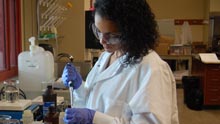
Pharmacy Student
Class of 2011"Take the opportunity to succeed at SVC seriously, but don't forget to have fun as well."
I graduated from SVC in three years, and now I am attending the University of Pittsburgh School of Pharmacy. After obtaining my PharmD, I hope to pursue a residency and practice as a Clinical Pharmacist. I am from Beaver County, only a little more than an hour away from SVC, but I currently live in Oakland, Pennsylvania.
My favorite things about SVC socially would have to be all of the activities that were constantly at our disposal. There was so much to do; I never found myself bored. Another really great part about the social life at SVC is that because it is so small, you get to know people on a really personal basis. Some of the relationships I have forged in my time there will be with me for the rest of my life. Academically, I couldn’t be happier that I chose St. Vincent. The high level of instruction that I received in my time there not only taught me how to think critically and problem solve, but also prepared me for the next step more than I could have ever imagined. I owe St. Vincent for the success that I am having now in my graduate program.
All of the homecoming festivities were always very fun as a student. One of the coolest things to witness and be a part of was the building of the Sis and Herman Dupré Science Pavilion. I spent countless hours in both the old and new buildings, and it was fascinating to see the change. Now science students at SVC finally have the top-notch facility to match the education that they are receiving.
The biggest tip that I have for freshman would be for them to take the opportunity to succeed at SVC seriously, but don’t forget to have fun as well. The time is gone before you know it!
James D. Bendel
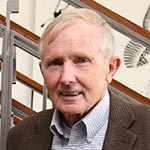
Alumnus
Class of 1960The Benedictine Mission has been a strong part of my life. There is no question that ‘the journey through life to the ultimate end’ should be a focus for all of us.”
Graduating from high school, there were only two choices for college in my view, either the Naval Academy or Saint Vincent.
Although Annapolis never became the focus of my undergraduate life, by graduating from Saint Vincent and then going on to Newport, Rhode Island, for Officer Candidate School, I ended up with the “best of both worlds.”
After four years of active duty in the Navy, and then twenty-five more in the Navy Reserve, that “avocation” ended as I retired from the Navy as a Captain. Saint Vincent, then the Navy, quite an acceptable compromise.
After teaching English and coaching basketball and baseball at Serra Catholic for two years, and receiving a MAT from Pitt, I returned to the college to work in the Development Office. Interesting that at my “advanced age” I am back for my third and final time in the same department, one that is now called Institutional Advancement. Same mission, however: encouraging alumni and friends to support the college!
A significant portion of my undulating career occurred when, by chance, I became the CEO of Adelphoi Village, a role that placed me in that agency for over thirty years. You may have heard of that program, but I clearly remember when in its infancy there were just a few troubled youth under their care, and not well-known in the child care field.
Oh, and somewhere along the way I developed an enjoyment and challenge of playing tennis, and on three separate occasions, coached either the men’s or women’s tennis teams. And, know that I still “think” that I can play the game!
Today, I am blessed in having a wonderful loving wife, along with five children (four of whom are adopted), and seven grandchildren.
The Benedictine Mission has been a strong part of my life. There is no question that “the journey through life to the ultimate end” should be a focus for all of us. And, I would say that there a three statements that we should all remember as we travel that path.
- “Don’t ever take yourself too seriously, and
- “There is no limit to what can be done if you don’t care who gets the credit,” and
- "Have fun” in everything that you do!
Dr. Thad and Bethany Pajak
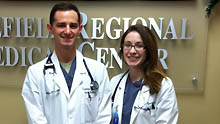
Alumni and Donors
“I came in with a fairly average skill set, but I was able to get involved in so many activities at Saint Vincent that made me a dynamic person. It really became a launching pad.” - Thad PajakBoth Bethany and Thad Pajak felt more than prepared for medical school by their educational experiences at Saint Vincent College.
“From a technical standpoint, Saint Vincent physiology was more difficult than medical school physiology,” said Thad, a 2007 graduate of the biology program who earned a doctor of osteopathy degree from Virginia College of Osteopathic Medicine.
“We had seen the material from a medical school level; it was review,” he said, crediting program director Dr. James Barnett for setting a high standard. “The hardest thing I ever did was to take his classes. Someone who puts you through that challenge, you never forget.”
Thad Pajak is now an active-duty soldier and family physician in his final year of residency at Martin Army Community Hospital in Columbus, Ga.
“There was a whole dynamic there that prepared me, especially as a family doctor, to look at the big picture,” he said, explaining that his patients are complex people who may have medical problems that are complicated by family, situational or cultural issues. “We really thought about the whole person. Knowing about philosophy and religion and people’s cultures has made a big difference.”
Thad Pajak not the only doctor in the family: At Saint Vincent, he met his wife, then Bethany Evans, also a biology major and 2007 graduate who subsequently earned her DO at the Virginia College of Osteopathic Medicine.
Bethany Pajak is in general practice in occupational medicine, caring for work-related injuries.
She shares her husband’s enthusiasm for the academic challenge Saint Vincent offers: “Saint Vincent provided me with a very strong foundation in the natural sciences. I felt very prepared for the type and amount work medical school demanded.”
Even today, she recollects her classes as she works. “As a practicing physician, I still find myself recalling my core knowledge base, which in particular the biology professors instilled in me. Whether listening to a patient’s heart, or writing a prescription – I can still hear the voices of those professors and it seems like just yesterday I was sitting in class.”
Both have fond memories of classes with professors outside their major.
Bethany said chemistry professor Dr. Matthew Fisher, who knew of her desire to provide medical care to those most in need, gave her a book, “Mountains Beyond Mountains,” tracing the story of a Harvard-trained physician, Dr. Paul Farmer, who created a foundation to better serve patients in Third-World countries with modern medicine.
“Dr. Farmer became an idol of sorts. His work was the fire that kept me focused during the four long years of medical school,” she said, adding that three years and several medical mission trips after receiving the book as a gift, she had the pleasure of meeting Farmer in person. “It was an unforgettable experience and a reaffirmation of career choice. I even had him sign my white coat. I owe it all to Dr. Fisher!”
While he was a biology major, Thad “minored in cross country,” and counts his coach Dr. Andrew Herr as an influential mentor in many areas of life outside the classroom. He also particularly remembers taking Environmental Ethics with Dr. Gene Torisky, who set “an expectation that you had read the material and come prepared to engage in the conversation.” For the final oral exam, the professor made a pot of coffee and held a two-hour dialogue on the material, “not as professor and student but colleague to colleague,” an experience he considers rare for undergraduates.
Both took part in service trips with Campus Ministry. “Some may say Saint Vincent is a small college, but I was able to see the world,” Bethany said. Thad added that after he completes his military service, they’d like to return to the area and invite SVC students to join in medical mission trips with them.
The couple have chosen to give back to SVC, in particular supporting athletics. “Saint Vincent is really a place where academics and athletics can sculpt you into a well-rounded individual without feeling like you are giving up a true passion,” Bethany said.
Campus activities were also important: “I came in with a fairly average skill set, but I was able to get involved in so many activities at Saint Vincent that made me a dynamic person,” Thad said. “It really became a launching pad.”
Both would recommend their alma mater to current high-school students, though Thad added a warning: “It does take a certain kind of person, to understand there is never going to be an easy class. It’s for people who are up for a challenge … not for the faint of heart.”
Alumni & Friends
- Alumni Events
- Supporting Saint Vincent
- Giving Opportunities
- Forward, Always Forward
- Recognizing Our Donors
- Alumni of Distinction
- Athletic Hall of Fame
- Alumni Services
- Alumni Council
- 1846: The Magazine of Saint Vincent College
- Journey Forward
- Prep School
- Homecoming and Fall Family Weekend
- Alumni Referral Program
- Recognition Events
Alumni Office
Phone:
724-805-2457
Email:
alumni@stvincent.edu
Office of Philanthropy and Alumni Relations
Phone:
724-805-2949
Email:
annualfund@stvincent.edu


